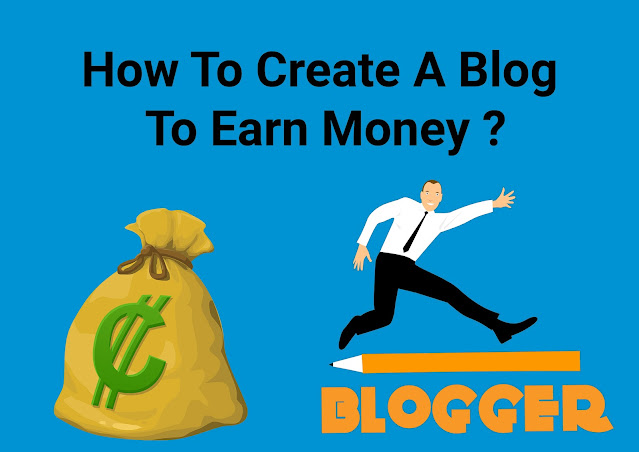
How To Create A Blog To Earn Money?
How To Create A Blog To Earn Money?

Create a blog
Step1:
- Sign in to Blogger.
- On the left, click the Down arrow.
- Click New blog.
- Enter a name for your blog.
- Click Next.
- Choose a blog address or URL.
- Click Save.
Note: Make sure you comply with the Blogger Content Policy and Terms of Service.
Manage your blog
Step2:
2: You can choose how you want your blog to look. Learn how to change the design of your blog.
What Browsers you can use For
- Chrome
- Firefox
- Safari
- MS Edge
Note: New browser versions are frequently released. Make sure to keep your browser updated to the latest version for the best results.
Fix issues with the custom domain setup
How To Add pages to your blog
Important: You can't use specific posts as pages.
You can create pages for consistent content like “About” or “Contact.” Pages can show up as tabs at the top of your blog or as links on the side.
Step 1: Show your pages
- Sign in to Blogger.
- In the top left, select a blog.
- From the menu on the left, click Layout.
- In the section you want your pages to show, click Add a Gadget.
- In the window, next to "Pages", click Add
.
- Set your settings and click Save.
- To save the arrangement, in the bottom right, click Save
.
Tip: To change where your page shows up, drag the gadget to a new location.
Step 2: Create, edit, or delete pages
Important: There’s no limit to the number of pages you can have in one blog.
Step 3: Select the pages to show
- From the menu on the left, click Layout.
- In the “Pages” section, click Edit
.
- Select the pages you want to show and click Save.
- To save the arrangement, in the bottom right, click Save
.
Create, edit, manage, or delete a post
Write a new post
- Sign in to Blogger.
- Click New Post
.
- Create the post.
- To check how your post will look when it’s published, click Preview.
- Save or publish your post:
- To save and not publish: Click Save.
- To publish: Click Publish.
Add labels to your post
You can use labels to organize your posts. Your readers can use your labels to filter the content they get.
- Sign in to Blogger.
- To open the editor view, click an existing post or click New post
.
- On the right, click Labels
.
- Enter a label or click an existing label.
- To add more than one label to a post, separate labels with commas.
Tip: In your dashboard, next to the title, you can find your labels.
Filter your posts with labels
- Sign in to Blogger.
- In the upper right, click Labels
.
- Select any number of labels.
- Click Apply.
Publish a post
Edit a post
- Sign in to Blogger.
- Under the name of a blog, click Posts.
- Click the title of the post.
- Make your changes.
- To check how your post will look when it’s published, click Preview.
- For posts that:
- Have been published: Click Update or Revert to draft.
- Haven’t been published: Click Publish or Save.
Delete a post
- Sign in to Blogger.
- In the top left, click the Down arrow
.
- Click the name of a blog.
- Point to the post you want to delete. When it appears, click Delete
.
Format a post
Use keyboard shortcuts
Content to avoid
Do not use:
- Material hosted by someone else without their consent.
- Copyrighted materials.
- Content that violates our content policy. This includes, but is not limited to, explicit imagery posted without the subject’s consent and hateful, violent, or crude content.






0 Comments